A Simple Tool To Fine Tune Your Diet for Optimal Health
Satiety and nutrient density with Marty Kendall.
Do you need to perform expensive blood testing to determine ‘what nutrients you’re deficient in’? Probably not. Ensuring you have adequate nutrients on a daily basis is not only cheaper but may be a better long-term strategy. Today I speak with Marty Kendall, who’s developed a simple system to assess where you have holes in your diet.
Episode Intro
Dr. Michael Ruscio, DC: Hey, everyone. Welcome back to Dr. Ruscio Radio. Today I’m here with Marty Kendall and we are going to be talking about techniques and tracking tips to make sure you have the best, most nutrient-dense diet for satiety and optimal health. This is definitely something I’m looking forward to getting into because there’s this confusing landscape of, “I can take this urine test or this blood test and they will tell me what I need in my diet.”
What is Nutrient Optimiser?
- Personalized nutrition
Personal micronutrient analysis
Recipes
Extensive report to start your optimal diet
Protein percentage leads to better satiety, carbs, and fat can lead to overeating
- Total protein % intake = 15-20 grams minimum, up to 40% max for weight loss
Typical deficiencies
- Vegan/Vegetarian = B12, Omega 3
Low carb diet = Vitamin K, Magnesium, Calcium
Keto = Potassium, Magnesium, Calcium
3 pillars of Nutrient Optimiser
- Nutrient density
Insulin load
Satiety
Powerhouse foods
- Organ meats are good, but not the end/all be/all
Oysters, sardines, seafood are also good
Green veggies but not in excessive amounts
Where to learn more
- Get your Free report at nutrientoptimiser.com
In this episode…
Episode Intro … 00:00:42
Tracking Calories … 00:03:36
What Factors Influence Satiety … 00:05:17
Optimal Protein for Health … 00:08:09
Micronutrient Goals & Deficiencies … 00:13:00
Cluster of Nutrients … 00:20:09
Cronometer Data Assessment … 00:22:34
Food Sensitivities … 00:24:55
Grain Scores … 00:27:52
Overlooked Nutrient Options … 00:32:19
Getting Started … 00:35:36
Episode Wrap-up … 00:41:24
Download this Episode (right click link and ‘Save As’)
I question some of that thinking. Marty has put together a real, practical way of tracking and assessing. Marty, welcome. I’m looking forward to really digging into this topic.
Marty Kendall: Yeah, awesome. Really an honor to be here, and after listening to all your podcasts, great to chat with you.
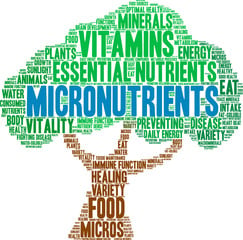
DrMR: Well, thank you. It’s always nice when someone’s heard my name before and who gets some of the philosophy of trying to take a no-nonsense approach of “Let’s find the path of least resistance” rather than making this stuff harder and more expensive than it has to be. Before we jump into the thrust, let’s go briefly into your background and how you got into tracking micronutrients.
MK: Well, I’ve been married to my wife Monica, who is a type-1 diabetic, for 18 years. Day-to-day it was, “How do we stabilize the blood sugars to the point that she feels healthy and vibrant and gets the most out of life?” Then having two children makes things a bit more serious. So I dove into that, trying to understand it more, and eventually came across a concept called the insulin index and downloaded that data. Being an engineer by day I crunched the numbers to try and find how we could quantify our diet to stabilize insulin response, which is not just carbohydrate. It involves fibrin and fructose and, to some degree, fat as well. I did that and got to a point where I realized that hey, a really, really high-fat diet with low fiber and low protein tends to be low in nutrient density.
Living in the Robb Wolf, Mat Lalonde headspace, I realized that we need to do something. I mixed insulin load with nutrient density, which would also quantify it and optimize our diet, having a nutrient-dense, low carbohydrate, low insulin response diet. Then with my own journey of trying to lose weight and trying to gain muscle, I realized that different people need different types of diets to lose weight, bulk up, or be an athlete. More recently I’ve been trying to dial in satiety to actually quantify what factors about food influence satiety to help us eat less or help us eat more, without relying as much on tracking calories to the nth degree forever.
Tracking Calories
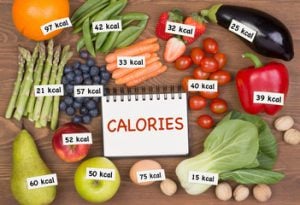
DrMR: Certainly calorie tracking can be used in the short term to help calibrate. I have discussed on the podcast before that I was overindulging “healthy fats”. When I started tracking, I would see on a normal day I’d come in around 3000 to 3,500 calories. Then if it was a night when I was having cheese with dinner, I would just jump up to like 4,100 calories. I’d say, “Wow, maybe half a block of cheese with my dinner was too much.” So there were some simple things that helped identify certain throttles I needed to put in place. Then once I identified those, there was no need, at least in my mind, to be meticulous in the tracking long term. So a short term method to calibrate helps you see where you’re doing things right, wrong, and then where to make adjustments.
So, I think we’re on the same page there. You mentioned something before we started the recording, which was in the last two interviews we’ve done with Christopher Gardner, where he talked about his DIETFITS trial. He posited that the next frontier is satiety. That ties in with my experience with my Cronometer tracking. I know this is something that you’ve really been incorporating into your work. So, let’s tell people a little bit about your hypothesis. I should also mention for context, that Diana Rogers, whose nutritional opinion I have a lot of respect for, went through this challenge to optimize her diet based on what you’ve put together and she has the greatest things to say about it. So get us up to speed with what you’ve been doing, how you’ve been tracking this, what data you’ve been looking at, and then we can get into some of the details from there.
What Factors About Food Influence Satiety

MK: Maybe a year ago I was working with a mate Alex in Atlanta. He is a bit of a programming analysis guru and he stumbled across half a million days of MyFitnessPal data. We downloaded that and started crunching it and he went, “What can we mine this for to understand satiety and what factors of our food help us to eat more and eat less?” The outcome of that was percent protein. It’s not more protein, but the percentage of protein tends to align with greater satiety. Fiber also aligns with greater satiety. It’s really not carbs or fat, but the combination of fat that tends to drive us to overeat more and more.
DrMR: The combination of fat with carbs or how we eat in combination?
MK: Yeah, fat and carbohydrate. I suppose there’s nothing like it in nature other than acorns and breast milk that have a combination of carbs and fat together with a very low protein.
DrMR: Sure, and we’ve known that for a while that carbs and fat together are really easy to fall into and overeat on.
MK: It’s the complete formula for a modern, hyper-palatable processed diet. We can then quantify that to understand that it’s not just knowing the carbs and fat are bad and you should avoid them, but then to actually use that data to prioritize and optimize quantitatively. Being an engineer, that’s always a sort of question. The way I think, which I understand now is a little bit different from most people, but it can be useful. So we then devised a diet structure to mix satiety and nutrient density together. We ran a challenge last January to launch the Nutrient Optimizer, which Diana was involved in. It just worked in practice really nicely. People just said, “I’m eating these foods. I feel full. I can’t eat anymore. When I look at how many calories I’m eating, it’s much less than I’m used to eating.”

The weight just dropped off really nicely and we’ve got blood sugar improvements. A really good average of 5.1% loss over six weeks, which was really nice. One person lost up to 18%, which is massive in six weeks. Really good results overall. We use Cronometer as the input, which uploads into the Nutrient Optimizer. Then after six months of that, we had about 40,000 days of data. We then went back to look at, not just the macros to reconfirm the MyFitnessPal analysis, but also look at the micronutrient profile. Looking at which micronutrients line up with greater satiety and how much you need to promote satiety.
So rather than having a minimum to prevent deficiencies, you can say what’s the optimum intake you can achieve with real food that will promote health and satiety.
Optimal Protein Intake to Promote Health and Satiety
DrMR: So does this have a certain pattern in terms of what you’re looking for. Is there a range of percentage from protein, and then if you get protein right, are the carbs and fat less relevant? Or is there a more specific percentage you’re looking for there?
MK: Looking at it in more depth, about 15-20% seems to go off the muscle protein synthesis. We use that to rebuild and replenish our body and then anything over 15% is sort of an excess protein. Some people say, “Why do you need to eat too much protein because it turns to glucose?” It’s just hard for the body to convert that excess protein to ATP to be used in the mitochondria or to be stored as fat because of the higher level of dietary-induced thermogenesis. So your body seems to switch up its appetite for more food when it’s a higher percentage of protein. But if you give it fat and carbohydrates, your body just goes, “Yeah, give me more of that. I love it. I’ll just eat more and more of that.” Not only do you eat more calories, but you yield more energy from that because it’s got lower dietary-induced thermogenesis. Less is lost in heat and it’s much easier to use and store as energy.

DrMR: So, you’re recommending that when someone looks at their diet for a week, they look at their macros: protein relative to carbs, relative to fats. You want them to have the protein be 15 to 20% of their total intake?
MK: As a minimum. If you want to lose weight, then you want to dial that up more and more. As you probably know, trying to increase the percentage of protein in your diet is hard to do. It’s hard to achieve more than 30, 40, 50%. Bodybuilders will do that in the lead up to a competition, but you have to be really disciplined to do that just because there’s such a strong satiety response as you get up to that 30, 40, 50% from protein. So you can try, but your body basically rebels. It looks for those carbs and fats, the easy energy that they can get their energy quickly from. So the fight is to resist the donut and the croissants and the cookie and the chocolate milk and try to eat whole unprocessed foods. It’s not just the protein, but it’s the degree of processing that correlates with a lower degree of dietary-induced thermogenesis.
DrMR: I think everyone now is on the same page that minimally processed food is step one. We can get the nuance of grains or paleo or Mediterranean or carb and fats from there. But you’ve got to get food quality tucked away first. Pardon me if I’m trying to get overly granular here if I’m missing something, and we’re better to redirect somewhere else, let me know. I’m trying to provide people with kind of a target. So 15 to 20% minimum for protein. If someone’s trying to lose weight, you hinted that 50 is hard to do, so is there kind of a sweet spot that compliance seems to work and also leads to weight loss?
MK: Yeah, I suppose we’ve set a stretch target of about 40% as a realistic goal. About 85% of people can achieve that. Maybe 15% of people can push above that. But 40% protein, if you’re trying to lose weight, is probably an optimal target that you can creep towards. I think if people go from a really high-fat ketogenic diet to a really high protein diet, they’ll go, “Oh, I’m really hungry,” because all of a sudden they might have cut the calories by 50% by manipulating their protein. So that’ll be hard. But if you slowly increment up towards that 40% ish mark, you’re going to struggle to eat too many calories.
Sponsored Resources
DrMR: Hi, everyone. Let’s talk about probiotics, which helped to make this podcast possible. Functional Medicine Formulations contains a line of probiotics that I personally developed, and I’m super excited to be able to offer you the same probiotics that I’ve been using in the clinic for years and are a byproduct of an extensive review of the literature plus my own clinical experience.
In this line, you will find my favorite three probiotics in all three of the main categories that work synergistically to help you fight dysbiosis, like SIBO, candida yeast, and H. pylori, help to eradicate parasites, help to reduce leaky gut and repair the gut barrier, and can improve gas, bloating, diarrhea, constipation, and may even improve mood, skin, sleep, and thyroid function because of the far-reaching impact of the gut. You can learn more about these at drruscio.com/probiotics.
Approaches to Achieving Your Micronutrient Goals
DrMR: This is easier in theory but if you tell someone “try to do X percentage in your diet”, it’s hard to make a daily menu based upon this. If you have any insights, please share. My opinion is the best way to do this is to try to eat more protein and fewer carbs and fat in every meal. Track that for about a week or even look at it every day and get a sense, “okay, I’m eating more protein, I’m at 35% and now I’m eating fewer carbs and fat than I used to.” Just try to make some basic, plate by plate, meal by meal, day by day changes. See how they correlate in the more macro view and make some adjustments from there. But is there a better way to hit these numeric endpoints?
MK: I suppose what we realized in the first challenge is that it can be a bit overwhelming with all the data and detail, and trying to look at the Cronometer data and tracking. That’s definitely a great way to go and look, “Hey, where are your carbs and fat coming from in your diet and where’s your protein?” Maybe you can increase that and dial back your carbs and fat sources. But we’ve also tried to create a whole range of food lists to suit those different goals. So because we can quantify the carb set, protein, satiety, which foods lead to satiety, and which foods provide more of the harder to find nutrients we can then create food lists and recipes and meal plans that align with those different goals. That’s been the quest over the last year to simplify it to the point that you’ve got an easy place for people to start and go, “Okay, this is working for me. If I want to progress it, then I can dial it in with tracking my food and analyzing all the micronutrients.”

DrMR: Do you find that people are universally or commonly showing nutrient deficiencies in Cronometer? Let me take a really big, orientating step back and share with people my philosophy on this. I’m open and I haven’t done a firsthand review of literature, but I’m not sold on any of the nutrient evaluation tests, whether it be blood or various fractions of blood, RBC, WBC, urinary, hair, mineral. I’m not really sold that these are nearly as accurate as they purport to be. Now, I fully could be wrong, but just knowing what I have reviewed in the past and looking at what the evidence shows compared to what the field claims being so grossly different most of the time, unfortunately, it makes me assume a given test is guilty until proven innocent.
So I look at this in the same context. What I’d rather have someone do is track their food in Cronometer and then look back and say, “Boy, I have been grossly deficient in X, Y, Z.” With one important caveat, you’ve got to make sure that you’re using the best iteration of your food. So as an example, if you’re looking at ground beef, you may have ground beef that’s gone through a full analysis and has all the nutrients reported. Or you may have Buffalo Bill’s ground beef, it’s some kind of obscure, prepackaged ground beef and it may be all fine and good, but if it hasn’t been fully indexed in Cronometer, you may see only seven nutrients have been logged for this food.
Now there are more nutrients in that food, but they all haven’t been logged. So that’s the one caveat, that if you’re not using the most robustly documented nutrient profile foods, you’ll be like, “Wow, I only got 20% of my nutrients in today.” So, two questions there. One, using Cronometer and then do you share the perspective of we’re probably better off just optimizing input first before we go to various assays?
MK: Definitely. I suppose I agree that once you’re showing deficiencies in your blood or your hair or whatever, you’re probably really deficient and you’ve really got a problem. Yeah, definitely agree, and Buffalo Bill’s Bison Burger may only have seven nutrients logged in Cronometer, but everything in the USDA has typically 77 nutrients logged, which gives you a lot more powerful data.

DrMR: So that’s what you’re looking for. Sorry to cut you off. If anyone uses Cronometer, you’ll see when you punch in a food, let’s just say ground beef. If you find the fully indexed version of that food and they usually come up first in the search, so this is not as hard as it may sound. You type in ground beef and then you see a list of potential hits come up. Usually, the first one you click on is fully indexed and you’ll see 77 nutrients reported. So that’s how you know that you have the best one, right? So it’s not as hard as it sounds.
MK: We import that data and then you can say, well you’ve got 10 times your B12 requirement and eight times your Vitamin A because you’re eating a bit of meat. But it’s the magnesium or calcium or potassium or choline. Different people with different dietary preferences have different micronutrient fingerprints and everyone’s different. You can say, I can sort of categorize the vegan, or the carnivore or the pescatarian to some degree, but everybody’s got a unique fingerprint based on what they like to eat.
So it’s really nice to look at, these are the cluster of five nutrients, not just saying you need more Vitamin A or Vitamin B12 or whatever. You can say, well what are the foods that contain the five to 10 nutrients that you’re not getting enough of and what are the meals and foods that will help you optimize your diet to lift those and then a week later, where are you at now? And let’s look at the foods and meals that will help you move that forward. It’s like an iterative process and like you say, once you go through two, three, four weeks of doing that, you’re at a point where you go, okay, I have really lifted my overall nutrient score and you can go on autopilot from then, but it’s an incredibly instructive process to track your food and then seek out the foods that contain those nutrients you’re not getting enough of it at the moment.
DrMR: Just to kind of echo that, what this could look like is you could take a week, I’m thinking looking at a month is probably better, and then you can do a report and you can see where you’ve hit your requirements and where you are deficient and then let’s say, you’re deficient in magnesium. Look up top foods that are sources of magnesium and start incorporating those more so into your diet. Would you modify that at all?
Cluster of Nutrients
MK: I suppose rather than the one, most people just talk about the one particular nutrient at a time. We’ve designed a multi-criteria assessment to say, let’s look at the foods that contain those five to 10 nutrients that you’re not currently getting enough of. So, that’s where what we’re doing I think is quite different from what everybody else is doing. They just think of one nutrient at a time. You really need to think of the cluster of nutrients that you’re not currently getting enough of.
DrMR: Sure. Are you saying what it typically looks like when someone runs a report, there’s not just one nutrient, there might be three, four, five?
MK: Oh totally, there might be five or 10 depending on… and somebody who’s got an energy-dense diet who’s doing a lot of activity, they’re going to be getting a lot of food in, but the nutrient score may be lower because a nutrient-dense diet tends to be very high satiety and you can’t overeat that. So there’s sort of a balance depending on your context. But if you’re really trying to lose weight, optimize your weight, lose fat, then a really nutrient-dense diet that has less calories but heaps of nutrients is a really good way to go.
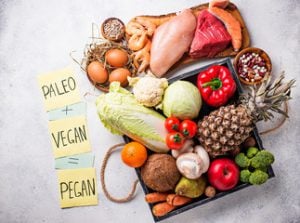
DrMR: Now, are you working with mostly kind of a paleo, ancestral type clientele or are you also seeing people from the vegetarian community? I’m asking this question because my followup is going to be, what are the typical deficiencies you’re seeing? And I’m just wondering if we can categorize these to mostly the paleo community or if you’re seeing vegetarians with different deficiencies.
MK: Yeah, there is a whole range. I suppose where we end up typically falling, because of my background in managing insulin, is people on a lower-carb diet. But yeah, definitely the vegetarian, vegans tend to be missing out on B12, omega-3 particularly, they’re harder to get and you can craft a nutrient-dense vegan diet, but those things are definitely very, very hard to get. But I suppose a plant-based diet is a very nebulous term and that can be a very nutrient-dense whole food plant-based diet. It can be just, doesn’t contain animals and is a whole load of processed grains and vegetable oils, which is problematic. At the other extreme, you’ve got the keto diet, which is high in refined fat and that is typically low in potassium, magnesium, calcium and a lot of important minerals that are harder to get that tend to come in a green non-starchy vegetable.
Cronometer Data Assessment
DrMR: You have this assessment program. Tell us a little bit more from the user end what that looks like.
MK: Yeah, so we’ve got a free report where people can track their Cronometer for a week and then upload that and it’ll come back and give them a micronutrient fingerprint that basically orders the micronutrients from the ones you’re not getting enough of to the ones you’re getting plenty of and says, “Here are the foods and meals that you can use to dial in those micronutrients.” Then it takes you from there. In January we’re about to release the updated version, version two of the Nutrient Optimizer, which is basically a habit-forming system that takes you from the basics of “let’s learn about what a micronutrient is” to taking it to optimize your muscle mass and recomposition or whatever, depending on what you need to stabilize the blood sugars, for different goals.
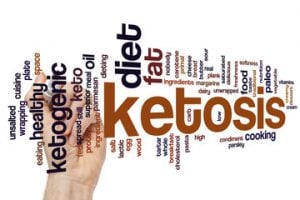
And I suppose that’s the thing is to be able to design a diet approach for different goals. Whether that’s weight loss, you’re an athlete, you’re trying to bulk, you’re trying to recomposition, you’re trying to manage your blood sugars, you’re trying to achieve therapeutic ketosis, you need a different diet for those different goals.
DrMR: And when you say different diet, this is an execution of said diet, but attention paid to ensuring that the typical deficiencies that are often seen with that diet aren’t realized because you’ve built it into the plan? Are we at that level?
MK: Yeah, but the micronutrients are one part of it. But then you’ve got the insulin load, which helps stabilize blood sugars if you’re injecting insulin or you’re managing your blood sugars, or satiety to help you lose weight or to get enough energy in if you’re an endurance athlete. So there’s three pillars, three factors that you can basically use as different dials to dial in different dietary approaches for different goals. So you don’t have to name your diet as vegan or keto, or paleo or carnivore, it’s like you need nutrients and you need energy and how can we manipulate those to give you what you want.
DrMR: And those three pillars again are what?
MK: Nutrient density. So, that’s probably the critical thing. Insulin load, which helps you stabilize your blood sugars and then satiety, which helps you dial in whether you have more or less energy in your diet.
Food Sensitivities
DrMR: And how are people, if this is something that you’re seeing much of, grappling with potential sensitivities, there are some people that really report that they have a hard time with grains or with dairy, is this something that you’re speaking to at all with your program?

MK: Yeah, I suppose the first point is to say, let’s look at the entire food system and look at which foods will give you the nutrients you need and that tends to exclude those refined grains that tend to be very low in nutrients. So that eradicates a lot of the anti-nutrients, a lot of those challenges, but then we’ve got a program that then steps people through and says, “Well, let’s try to optimize your diet, but what symptoms are you feeling? Is your digestion improving and how’s your brain fog and how’s your mood?” And you can reflect on that and then eliminate those problematic foods based on your actual symptoms.
Really oxalates and everything potentially are a secondary issue, I think. Once you get a nutrient-dense whole food diet that has a spectrum, a wide variety of foods, you’re going to get the nutrients that you need to process those oxalates. You’re going to get the calcium and magnesium that you’re going to need to work through those oxalates for example. So sensitivities tend to be a secondary thing, but definitely you can overdo the spinach or the almond flour or whatever it is and you need to be mindful of that at the same time, sort of as a secondary overlay to that.
DrMR: Now there’s also this debate of, as you just said, refined grains being not very nutrient-dense at all. There’s often this counterargument employed that if they’re non-processed grains, then they can be nutrient-dense. And then there’s a counter-counter-argument, which is, well those are only if they’re fortified grains. And I know this may not be fully in your box of expertise and analysis, but do you have any thoughts about, let’s say a non-processed grain. First, how would we really define an example of a non-processed grain and are those as nutrient-dense as some report them to be?
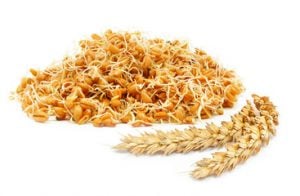
MK: Wheat germ, if you’re going to eat it, can be quite nutrient-dense, but it’s that germ that tends to be removed from the wheat and given to the cows or whatever, that doesn’t make it into the food system most of the time. So yeah, it’s generally the processed flours that tend to be quite void of nutrients. And anything that needs to be fortified may have a bit of extra iron or B12 or a Vitamin A supplement in there. But the likelihood that it was grown in fertile ground with a good microbiome in the soil that gets into your microbiome is fairly low. So yeah, sourcing your food from quality sources is really important at the same time.
Grain Scores
DrMR: So are there examples, to your knowledge, of minimally processed grains? Coming back to the example of Ezekiel bread that’s oftentimes reported to be minimally processed, whole grain, healthy. I’ve never fact-checked and it’d be interesting actually to check in Cronometer to see how it scores. Have you ever looked at any of these?
MK: Yeah, I did an analysis of James DiNicolantonio’s diet and he was eating a fair bit of Ezekiel bread and it didn’t rank particularly high. It’s not as bad as some options, but it wasn’t particularly amazing and off the charts, that it ranks on our optimum food lists at all.
DrMR: Okay, good to know. Are there any grains that you found that did score well?
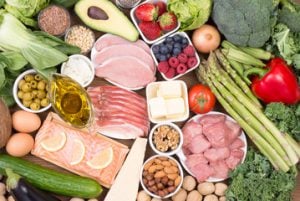
MK: Unfortunately, no. But at the same time, you need to get your energy from somewhere. You need to get your nutrients as the cornerstone, but then you need to say, “Well, am I going to get my energy from fat or from carbohydrate?” And you’ll tend to veer to one extreme or the other, which is good because you don’t want to be in the middle and getting your energy from somewhere is fine. I’m not a zealot about high fat or high carb, particularly. You need to get the energy in. In a high protein diet, you tend to get more energy from the fat that comes along with the protein, which is fine.
DrMR: Gotcha. Yeah, and I ask this because I think that the ancestral and paleo community have been very quick to kind of vilify grains and I think in large measure for good reason, but I fear we’ve kind of thrown the baby out with the bathwater and I think you actually made a great point, which is they may not be where you get the majority of your nutrients, but then we need some kind of fuel substrate. And I know the low carb enthusiasts would be yelling that you don’t need the carbs, but I think Mike Nelson‘s done a great job of kind of bringing to the forefront that for some with performance, carbs can be quite helpful.
MK: Yeah, definitely.
DrMR: I think I was making the mistake and Josh Axe did a great job of pointing this out when he was on the podcast a while back, that overeating processed fats can be a problem. And I think, yeah, I mean processed fats are not as bad in my opinion as processed grains, but when we’re looking at a caloric management perspective, they’re probably equally culpable because you can really load on the calories easily with processed fats. So I try to remain as unbiased as possible in pointing out the pros and the cons of processed grains and processed fats equally and not just absolving processed fats of any culpability because “fats are better for you than carbs”.

MK: Yeah, totally. In the MyFitnessPal analysis, we noticed that if you could stick to a very, very low-fat diet or a fairly low carbohydrate diet, you tended to do fine in terms of satiety and tended to eat less naturally. But most people gravitate to that mixture of fat and carbs like the donut, croissant, cookie. And once you get into that middle zone you’re in trouble. So I think it makes sense from a seasonal, circannual sort of approach that there were times and places where we had more carbs and more fats available. But it’s that combination when we can overload our fuel system with both at the same time, that we really get into trouble and end up obese, diabetic and all the metabolic syndrome issues that we’re so challenged with at the moment.
View Dr. Ruscio’s Additional Resources
Overlooked Options for Nutrients
DrMR: Now I’m assuming there are some common foods that are kind of emphasized in your reports due to the fact that we in the West tend to shy away from them and I’m assuming organ meats is probably one. Diana Rogers said that you really need to incorporate more canned oysters into your diet, which is actually a cool find for me because I really like canned oysters, they’re quite enjoyable. Are there some typical foods there that are kind of powerhouses that people are overlooking?
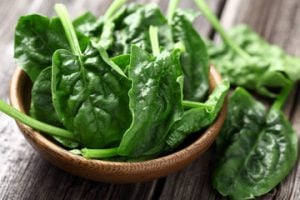
MK: Definitely. Oysters, salmon, seafood, sardines, a lot of people are deficient in Omega-3 because most people don’t like fatty fish or any fish or any seafood particularly. Organ meats are good but they only contain Vitamin A and the B vitamins. And they don’t necessarily give you a lot of potassium, magnesium and some of those minerals that a lot of people are missing. While not the be-all and end-all, they are definitely good and they always rank highly on the list. Any green non-starchy veggies are potentially amazing. But as we talked about before, you don’t want to just binge on spinach alone because you’ll end up with digestive issues, there’ll be a challenge with the oxalates potentially. So you want to get a broad spectrum of the sort of nutrient-dense whole foods and avoid the combination of refined seed oils and refined grains at the same time, which tend to be low satiety and low nutrient density at the same time.
DrMR: When you say seafood, are there some nuances here that start kind of bringing us into this territory of nose to tail? Some of that entails organ meats, are oysters or some of these other maybe more obscure seafood that people don’t eat a lot of, I’m sure people eat salmon a bunch and probably a fair amount tuna because they’re just common easy targets in the seafood realm, are there foods that are pretty dense in nutrients but we tend to overlook frequently?
MK: Caviar and whatever. But at the same time, how much caviar are you going to eat, you could probably eat a whole lot more mackerel and salmon, that sort of thing. So rather than seeking out superfoods, just finding foods that give you a really robust amount of nutrients that can have regularly and all the time. Other than saying, I had a tin of caviar and it cost $5 and you need to find things that will fill the majority of your diet most of the time rather than only seeking out that those superfoods.
DrMR: Yeah, no, I mean I appreciate the perspective there because I don’t want to be leading in my question and perhaps I was a bit leading there, but I don’t want to do the same thing I criticize about the mangosteen or the incredible rainforest antioxidant that claims to be the super-fit that’s going to cure all your ills. I don’t want to do the same thing with the fish-based food at the same time. So I appreciate that.

MK: But definitely you just need a robust range of things and if you’re eating the magic rainforest plant but the rest of your diet is complete pus, then it’s not going to be a great outcome. You need to have a robust whole foods diet that generally, they all rank highly.
DrMR: So the Cronometer tracking paired with the analysis through Nutrient Optimizer will help people see deficiencies in their diet and then give them diet guides, and it sounds like even nuanced diet guides depending on certain goals.
Getting Started
Can you tell us a little bit more about the program, where people would go to kind of plugin and get started? All that good stuff.
MK: Nutrientoptimiser.com is the website to do the free report and if you head on over to optimising nutrition, we’ve got a kickstart guide that we’ve just booted up that just helps people say here’s a list of nutrient-dense foods they can start with. We’ve got maximum nutrient density, bodybuilding nutrient density, fat loss, blood sugar, and a whole range of pescatarian, carnivore, ketogenic, plant-based. We’ve tried to cover the gamut and say, “What’s your diet preference? What’s your diet religion?”
DrMR: That’s great. Just really quickly just to chime in, I could see it being overwhelming if you gave someone a list of, “Hey, you’re deficient in all of these,” and then they have to go and do their own research to figure out how to get them in. So you’re giving them a guide that is nuanced to their dietary preferences and also to their goals. So I’d imagine from a user perspective that’s incredibly helpful.

MK: Yeah, and just starting with a simple food list of “eat more of these foods” is a great place to start. And then if they want to, they can look at, “Hey, what nutrients am I actually missing now,” and then we’ve got a whole bunch of health conditions, looking at the correlation between nutrient deficiencies and different conditions like fibromyalgia, depression, arthritis, PMS, fatigue, MS, cognition and a whole range, fertility, et cetera, et cetera, et cetera. We’ve got a long list of food lists and meal plans that are being tailored to those different goals. So to emphasize the nutrients that are typically associated with those conditions.
Episode Wrap Up
DrMR: And any kind of final words of advice that you’d like to leave people with?
MK: Yeah, I suppose just prioritize healthy whole foods and seek nutrients as the first priority. I think the whole diet community gets really confused and tangled up in different named diets and diet religions, be it plant-based, a carnivore or paleo or ketogenic and that can be really confusing and really meaningless. But if we can say, let’s define nutrition as food that contains nutrients and then tailor it to your goals. I think exciting times are ahead.
DrMR: Yeah. And I do want to echo that, especially picturing someone in my mind who maybe has gone paleo or gone low FODMAP and seen improvements there, but oftentimes in my experience, people need that push to broaden their diet. Even for me and I think my diet was pretty well dialed in, but I still had some areas that I needed to push out into. Mainly magnesium. In my case, the only thing that came up low was magnesium and I made some simple changes and that was quite beneficial. Mike Nelson also gave me a little prod to expand my diet a bit more. It was kind of monotonous with what I was eating and fell into the trap of, well, here’s the things I cook, I know how to do them quickly. I know how to do them efficiently and so, boom, boom, boom. And I got kind of locked into that cycle, not trying to broaden my horizons.

So the combination of his push to me with then looking in Cronometer gave me a nice jolt of, “Okay, I need to get out of my dietary comfort zone routine and broaden out my diet.” And I think we all have this tendency to find a diet that helps us feel better initially kind of in that healing phase. And then we shy away from venturing much out beyond that. And I can really see this tool, amongst anything that will broaden someone’s awareness as it’s a great win in getting them to open up their diets and make sure they don’t run the risk of any kind of deficiency because their input is chronically low due to staying in the healing phase of the diet.
MK: Totally, totally, totally agree.
DrMR: Awesome. Well Marty, thanks for the conversation. It’s been really insightful.
MK: It has, a real pleasure. Thank you.
Dr. Michael Ruscio is a DC, natural health provider, researcher, and clinician. He serves as an Adjunct Professor at the University of Bridgeport and has published numerous papers in scientific journals as well as the book Healthy Gut, Healthy You. He also founded the Ruscio Institute of Functional Health, where he helps patients with a wide range of GI conditions and serves as the Head of Research.Links & References
What do you think? I would like to hear your thoughts or experience with this.
- Get help using this information to become healthier.
- Get your personalized plan for optimizing your gut health with my new book.
- Healthcare providers looking to sharpen their clinical skills, check out the Future of Functional Medicine Review Clinical Newsletter.



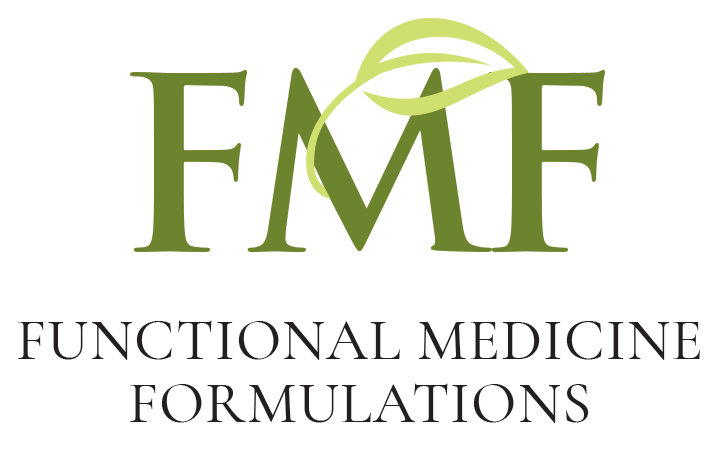
Discussion
I care about answering your questions and sharing my knowledge with you. Leave a comment or connect with me on social media asking any health question you may have and I just might incorporate it into our next listener questions podcast episode just for you!